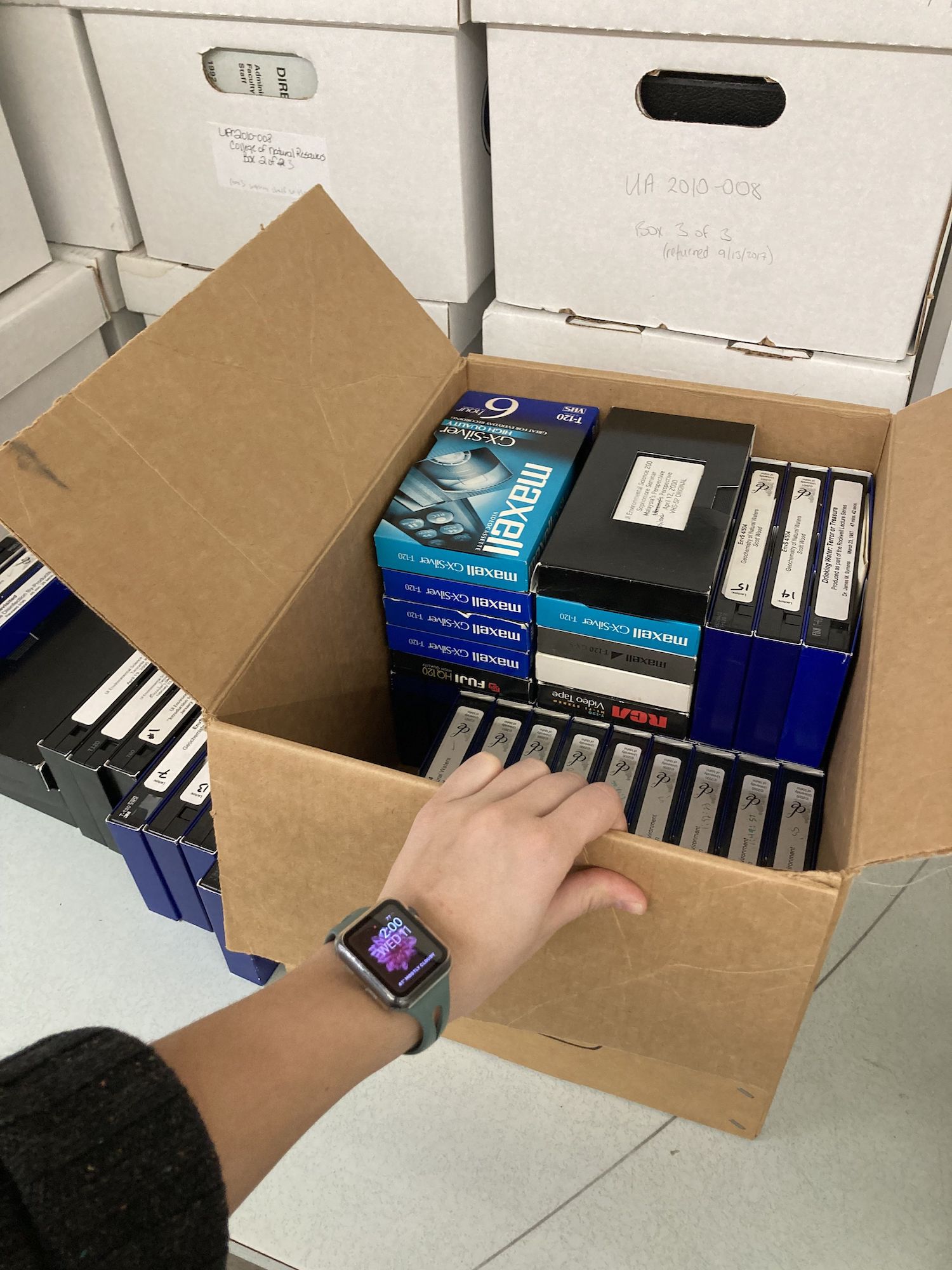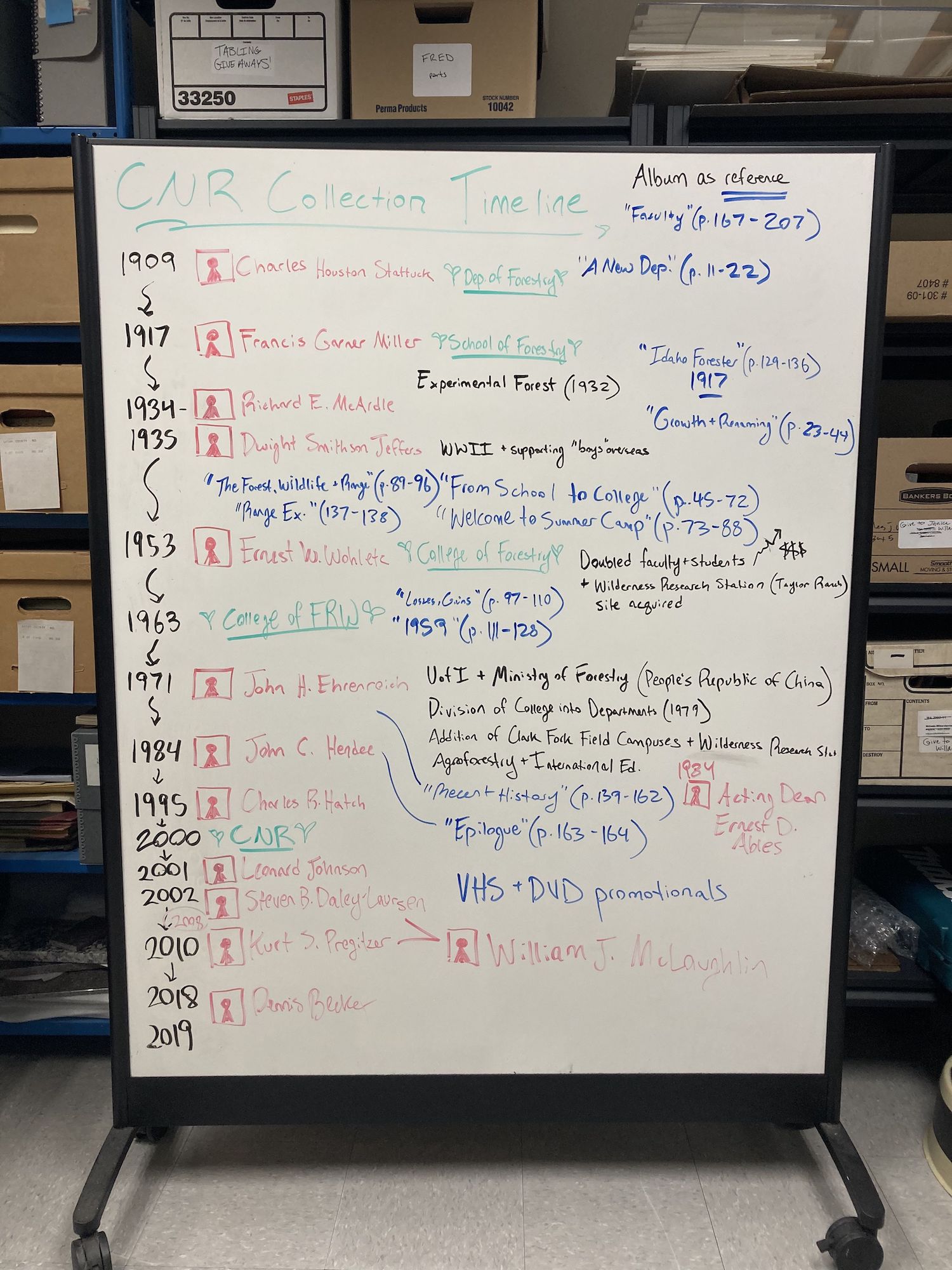Making History: Behind the Scenes
What is a collection? Is it the physical materials that lay inert in the archives, or is it the digitized items we feature on websites? For the U of I’s Special Collections and Archives, a collection can be both. In order to make our historical materials as accessible as possible, we process, catalog, and showcase materials for in-person and online viewing.
But how do you organize and display 70+ cubic feet of materials, ranging from photographs to field equipment? For the College of Natural Resources Collection, I brought together about 50 boxes of materials that had been donated over the last 40 years. Later, I received 20 more boxes from the CNR building and from the Ehrenreich family.
Drafting a Timeline
Faced with this sheer amount of diverse materials, it took me months to process and piece them together into a coherent history. Fortunately, I later uncovered the College of Forestry, Wildlife and Range Sciences Album that thoroughly chronicled a timeline of the college, from 1909 until 1984.
This Album became a foundational trunk from which additional materials could branch out. Using it as a skeleton, I pieced together complimentary materials into a new timeline, and eventually, this digital collection.
To Keep or Not to Keep…
What started out as 70+ cubic feet was eventually weeded down to 55. It may sound counterintuitive to throw out some materials, rather than preserve them all, but consider this: imagine if you kept every piece of mail you’ve ever received. That’s right, every bill, flier, coupon, and extra copy. You might fill up a room–or maybe two or three–with peculiar papers and parcels, and it wouldn’t stop there! Amidst those piles–or perhaps, well-organized files–you may preserve some really interesting pieces of cultural history.

Now, I won’t delve into a subjective analysis of what’s history and what isn’t, but thinking of preservation from a practical perspective, space is limited. Ipso facto, the archives are limited. Therefore, extraneous materials and extra copies must go, and it turns out that many boxes, especially office files, are filled to the brim with just that. By weeding out these fillers, I could create a more cohesive and coherent collection for future researchers.
Shedding Light on the Archives
Archivists can create new histories from inert, forgotten materials. While most items in the archives remain unseen, they have the potential to become living, breathing matter through research and community contribution. Personally, I view the boxes within the archives like seeds: with cultivation, aka processing, they can bloom into a forest of accessible information, such as finding aids, exhibits, and digital collections. Just as a forest thrives with biodiversity, so too does history thrive with diverse voices.
The archives can provide a unique opportunity for people to shape histories by directly viewing materials, collaborating to preserve cultures, and bringing new voices to the stage. What we manage to process becomes viewable collections, but there is still so much information lying dormant in the archives–stories waiting for the spotlight. By supporting the Special Collections and Archives, you too can bring these stories to light.
Donating to the Archives
This collection is comprised of materials donated by faculty and staff in the College of Natural Resources, including Dean John Ehrenreich and his family. The financial support that accompanied their gift of materials was essential to the development of a digital collection and detailed finding aid. To learn more about donating materials or funds to Special Collections and Archives, visit our website.



